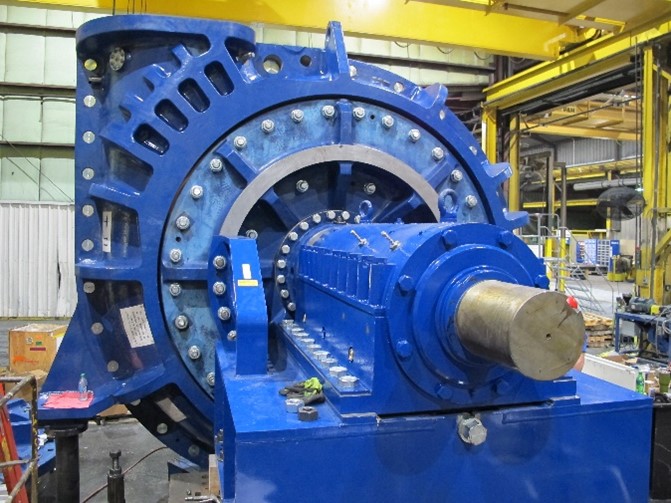A standard bolt up is the most time- and labour-intensive option because of the equipment required to achieve the 6,100 Newton-metres of necessary torque to bolt the CBA down properly. Examples involving a reaction arm include specialized torquing equipment. The reaction arm can cause damage when used without a spacer, as the arm may encounter CBA accessories (e.g., sight glasses, temp gauges), causing them to break.
Another drawback to the standard approach is the potential for misalignment, which then requires loosening the bolts and starting over. To counter this, maintenance techs must either change which bolts are tightened first, use different torquing equipment, or opt for a faster bolt up procedure.
Superbolt from Nord-Lock Group
The Superbolt is a trademark of Nord-Lock Group. This method utilizes eight smaller bolts to tension one nut, with special lubrication and torque factors, so there is less torque required on each bolt to meet final overall torque requirements. This option uses a tensioning force, rather than the standard method’s twisting force, to avoid affecting alignment.
The Superbolt technique has been around the industry for a while and is sometimes used in bolt up applications to speed up CBA torquing. It requires two people and the following tools, including:
- One 20-mm ratchet and 80-mm socket for the adjustment nut.
- One 12.5-mm drive torque wrench.
- Two 12.5-mm drive 11-mm impact sockets.
- Two 12.5-mm drive ratchets.
- Two 12.5-mm drive impact guns, preferably air operated or cordless.
- Two 100 Newton-metre torque sticks.
- A dial indicator.
This method replaces twisting forces with tensioning, eliminating the reaction arm problem along with the risk of potential damage to CBA accessories.
The Superbolt approach, clocking in at 35 minutes, outpaces the standard bolt up by 25 minutes and reduces the risk of damage.
VIPER hydraulic nuts by Integra Engineered Products
Hydraulic nuts have also been used for many years, but they are a recent addition to the CBA bolt up application. In this new context, the process uses hydraulic pressure to stretch the CBA bolt with ease and efficiency. As far as tools go, this approach requires:
- One pump with hoses and quick connects.
- One 80-mm socket with ratchet.
- One torque bar.
- One 75-mm socket 20-mm drive.
- A dial indicator.
The hydraulic nut approach requires two people. Like the Superbolt method, it uses tensioning rather than twisting force, and at approximately 8 minutes, requires the least amount of time.
Choosing the best option
Each of the CBA bolt up options has its place, and all three will get the job done. Different approaches allow customers to consider their operation priorities and choose the best option for optimizing their time, labor, and tool resources.
For more information, visit www.ksb.com.
